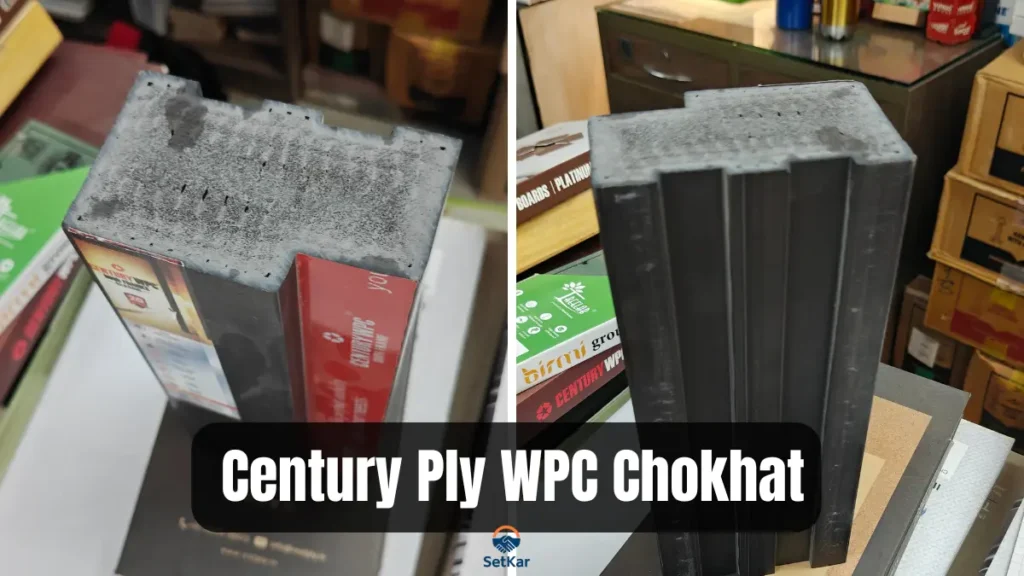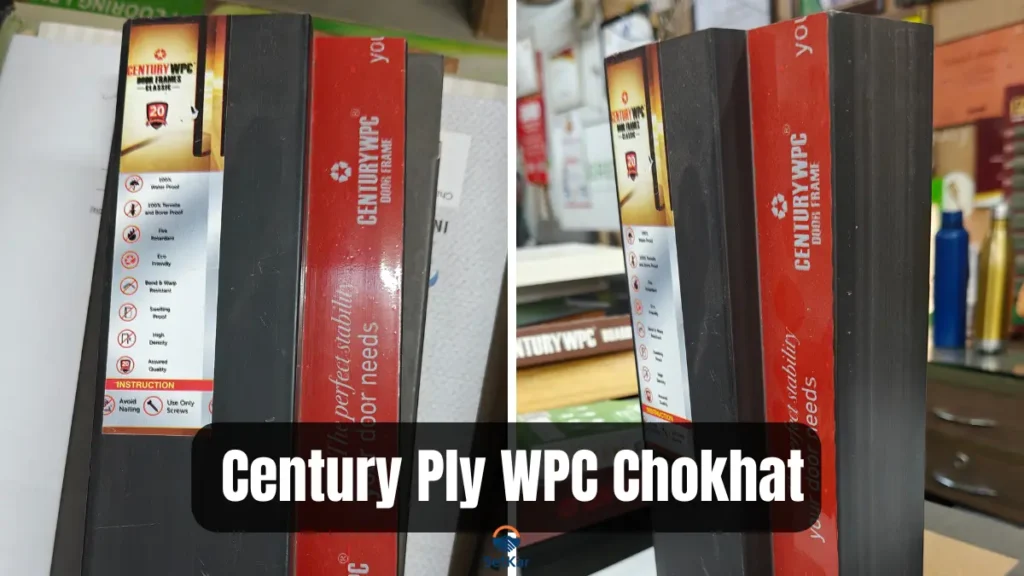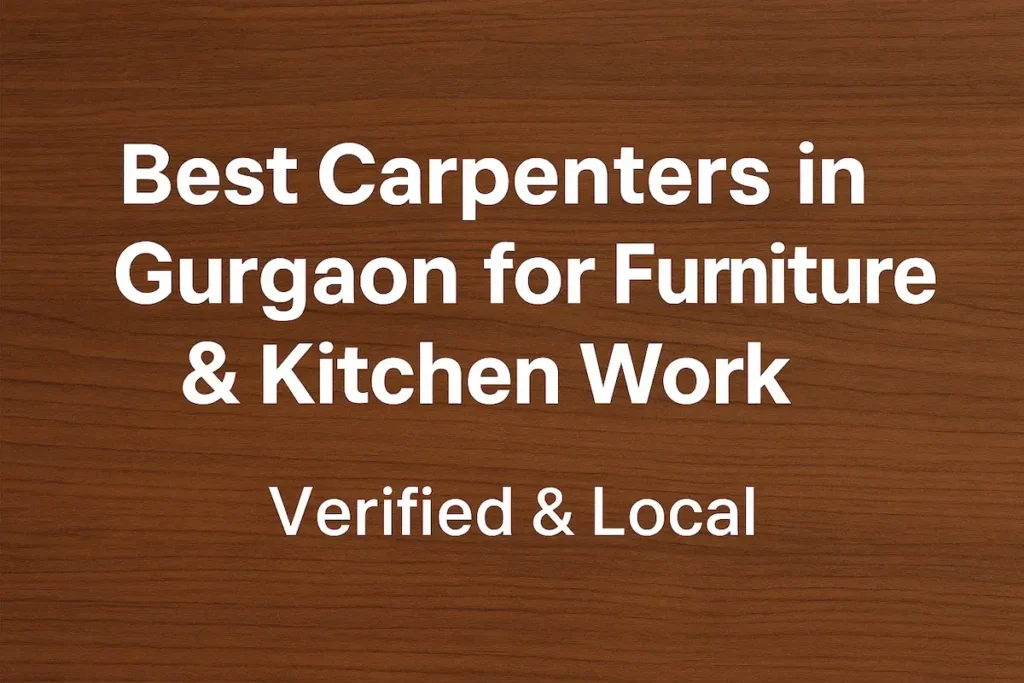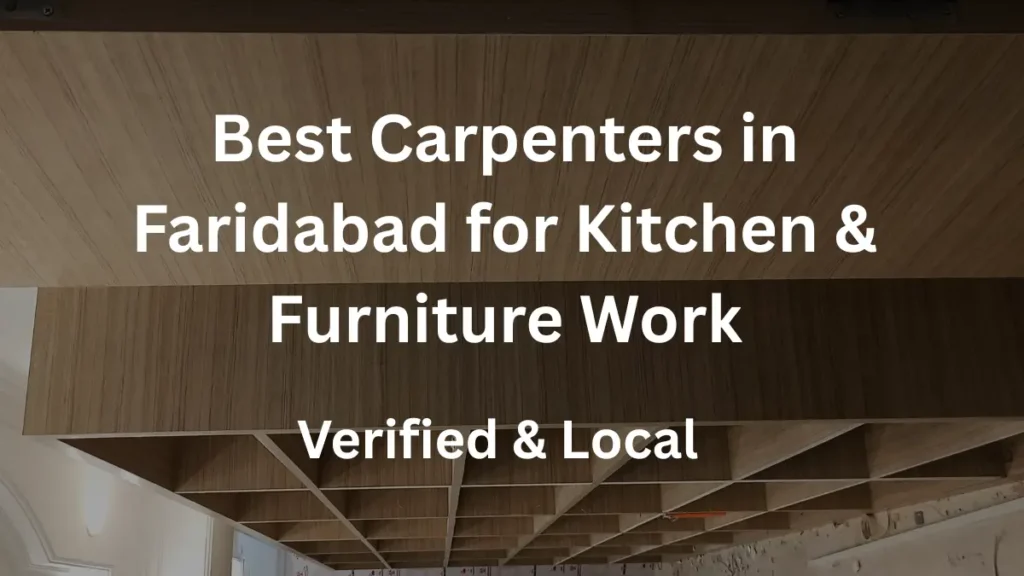In modern construction and interior design, the door frame plays a vital role—not only in structural support but also in durability, appearance, and maintenance. Century WPC (Wood Polymer Composite) Chokhat (Door Frames) by CenturyPly offer a compelling alternative to traditional wood frames. Whether you’re building a new home, doing a renovation, or installing doors in high-moisture zones, WPC frames are rapidly gaining popularity.
CenturyPly is also one of the biggest manufacturers of WPC Board.
What is a Century WPC Chokhat (Door Frame)?
- Material Composition: Made from a blend of wood fibers (or wood powder) and polymer (plastic-based), which gives it balanced strength and moisture resistance.
- 100% Waterproof: They don’t swell, rot, or deform when exposed to moisture—ideal for bathrooms, kitchens, or coastal areas.
- Termite & Borer Proof: Because there’s no raw wood exposed, the risk of termite or borer damage is significantly minimized.
- Warp & Crack Resistance: WPC doesn’t respond to humidity or temperature changes the way wood does, so you get less warping or cracking over time.

Key Features & Specifications
| Feature | Details |
|---|---|
| Sizes & Cross-Sections | Available in various sizes: 3×2 in, 4×2 in, 4×2.5 in, 5×2.5 in, 6×2.5 in, etc. Lengths can be standard 6 ft or 10 ft (or custom), depending on the range. Rebate (Patam) – 32mm as standard |
| Density | Approx. 800 kg/m³ (higher than many conventional wood frames) giving good strength. |
| Warranty | Usually comes with a 20-year warranty on many Century WPC Chokhat. |
| Finish Options | Raw finish (for paint or PU polish), laminate or veneer finishes are possible. Many frames are paintable or laminate-ready. |
| Usage | Suitable for main door frames, internal door frames, bathrooms, kitchens, institutional/office settings, coastal areas. |
Advantages Over Traditional Wooden Door Frames
- Zero Swelling, Rotting, or Cracking
Wood tends to absorb moisture, swell, and eventually rot. WPC frames avoid these issues, so they maintain their shape and function better over time. - Low Maintenance
WPC frames do not require frequent repainting or polish. A simple wipe-down is often enough. This saves cost, effort, and time. - Durability in Harsh Climates
In humid areas or during rainy seasons, wooden frames might warp or get attacked by termites. WPC resists these challenges, making it great for bathrooms, external doors, kitchens. - Aesthetic Flexibility
WPC frames can be painted, laminated or veneered to match decor. They offer clean finishes and modern aesthetics. - Strength & Screw Holding
They have good mechanical strength, can hold screws well for hinges and hardware—important for stability of heavy doors.
What to Consider / Possible Limitations
- Cost: Century WPC Chokhat (WPC Door Frame) tends to be more expensive than basic wooden frames or cheaper wood substitutes. The premium is for durability and better materials.
- Weight & Cutting: Because of the density and composite material, cutting or modifying WPC Chokhat may require proper tools and skills. Mistakes might reduce strength.
- Finish Matching: If not done correctly, laminated or veneer finishes may look unbalanced with other wooden elements in the house. The design needs consistency.
- Availability: While CenturyPly has many dealers, sometimes particular sizes or cross-sections may not be available everywhere, especially in smaller towns. Always check stock.

Where & How to Use Century WPC Chokhat or WPC Door Frame
- Bathroom & Kitchen Door Frames: The waterproof nature makes them ideal here.
- Main Entrance Doors: Strong cores and hardware mount-ability make them reliable for heavy use.
- Internal Doors: For bedrooms, living rooms, etc., where you want contrasting textures or painted finishes.
- Institutional / Office Use: Places with heavy foot traffic and changing weather (e.g. office washrooms, school labs) benefit from the low-maintenance aspect.
- Coastal or High-Humidity Regions: Near sea-coast or monsoon-prone zones, wooden frames struggle—WPC survives better.
Comparison: Century WPC Chokhat (Door Frame) vs Traditional Wood Door Frame
| Aspect | Traditional Wood Frame | Century WPC Chokhat (Door Frame) |
|---|---|---|
| Moisture Resistance | Low — swells, rot possible | High — waterproof / swell-free |
| Termite & Borer Resistance | Needs chemical treatments, risk exists | Built-in termite & borer proofing |
| Warping / Cracking | Common issue in wood | Minimal due to composite structure |
| Maintenance | High — repainting, polishing often | Low — clean, occasional touch-ups |
| Lifecycle Cost | Lower upfront, higher maintenance | Higher upfront cost, lower long-term cost |
| Aesthetics | Natural wood looks; finishes vary | Flexible finishes, painted/laminated/veneered |
Check out the ultimate comparison between Alstone & Century WPC Door Frame
Our Conclusion
Century WPC Chokhat (Door Frame) offer a modern, robust, and maintenance-friendly alternative to traditional wooden door frames. If you want durability, moisture resistance, and peace of mind without constantly worrying about rot, termites, or warping, going with WPC is highly recommended—especially in high-moisture or heavy-use scenarios.
For homeowners, carpenters, and designers in Gurgaon, Noida, Delhi NCR, or humid/monsoon areas, WPC Chokhat (Door frames) from CenturyPly are an investment that pays off.
FAQ – Century WPC Chokhat
Are Century WPC Chokhat fully waterproof?
Yes, Century WPC Chokhat are designed to be 100% waterproof and are ideal for bathrooms, kitchens, and wet zones.
Can I paint or laminate a WPC door frame?
Absolutely. These frames are made to be finished with paint, PU polish, or laminates/veneers to match your decor.
How strong are WPC door frames in terms of holding screws and hardware?
Very strong. WPC frames have high density and good strength for mounting hinges and hardware. They perform comparably to wood in many cases.
Do they come with warranty?
Yes. Many Century WPC Chokhat have warranties of 20 to 25 years depending on the product line.
Are these frames Eco-friendly?
Yes — most WPC frames are recyclable and free from issues like rotting and termite damage, which reduces replacement frequency. Some are also made with low or no VOC emissions.


